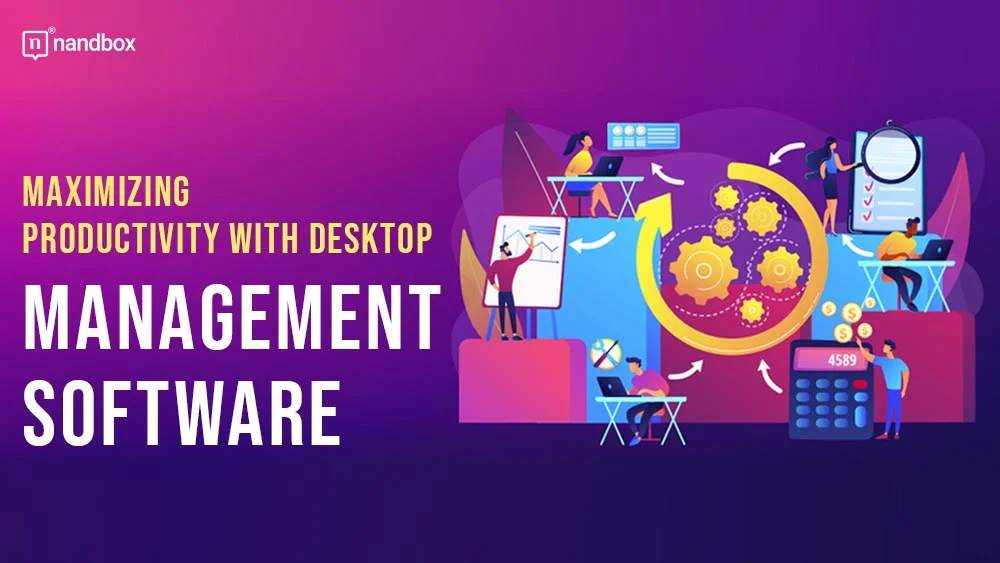Whether starting up or established, any business can have a dispersed workforce and/or remote workers who use corporate or self-owned devices to access sensitive data. As businesses grow and expand, the device fleet in the organization also keeps growing. Organizations today are on the hunt for robust device management solutions and are embracing mobile device management (MDM) solutions for device compliance and security. Desktop management software is a component of the systems management umbrella that includes the administration of all components of an organization’s IT infrastructure. Although called ‘desktop’ management, it includes the management of other devices like laptops and other computing devices. Desktop management software helps IT admins manage and secure all computing devices within the organization.
Desktop Management: Why is it Needed in Organizations?
In organizations it can be challenging for IT teams, considering factors like multiple device types running on different operating systems and each device having a different set of software applications. With multiple desktops, tablets, and other computing devices, it is a time-consuming and overwhelming process for IT admins to have all the devices managed and secure. Over and above, IT admins also must ensure the software is updated and security patches are in place, and they extend support and management in case of any device issues.
For instance, consider a scenario where an employee works remotely, and the device is frequently disconnected from the network, hampering productivity. It is challenging for the IT admin to reach the location or even call for the device, leading to expenses and consuming time.
With thousands of devices and multiple functions, it can be challenging for IT admins. Some factors why desktop management software is important are;
- The software can support both current and future user environments
- Its implementation can boost efficiency and productivity of employees
- It helps IT admins support computing devices throughout the device lifecycle
- It helps organizations improve device and data security
- It helps IT admins push patches and install them regularly
- The software can set policies for devices to be used by only authorized users
Most desktop management software works across different operating systems. Organizations can also provide training programs for employees to ensure they follow the best security practices. This helps organizations ensure work and tech support remain seamless.
How Desktop Management Software Can Help Maximize Productivity
Whatever organizational size, the software simplifies IT tasks and is a robust tool for business growth. Desktop management software helps IT admins automate, manage, and secure all computing devices in operation. It significantly improves administrative capabilities and keeps security-related risks at bay. Desktop management software features contribute to maximizing organizational productivity.
Let’s discuss them further.
Remote management of devices
Today, organizations employ many remote workers, and their productivity largely depends on the device running without issues. It allows IT admins to monitor and control devices connected to the company’s network. Advanced remote computer monitoring capabilities enable IT teams to track performance metrics, identify potential issues before they escalate, and ensure optimal device functionality across the organization. IT admins can remotely manage the apps, content, security, software, and system updates on all managed devices.
Reducing device downtime
Another benefit of desktop management software is its ability to solve problems faster and reduce device downtime. IT departments can quickly access devices and troubleshoot for system errors, software errors, or network errors using remote desktop management software. While workers are on the field, IT admins can provide real-time assistance and technical support. This saves time and effort and improves the productivity of the user and the IT admin.
Remote support and management
Remote support and management includes installing or uninstalling applications, pushing updated content, managing updates, remote monitoring, and tracking. The IT admin can easily perform all these functions on an individual device or a device group. Additionally, IT admins can schedule tasks like the silent installation of apps and updates without end-user intervention, thus maximizing overall productivity.
Improved security

Desktop management software secures devices from malware and cyberattacks by employing a password policy with MFA, conditional access, role-based access, etc. The security features provide an extra layer of defense which protects against data leaks and misuse. When security is taken care of, devices run without interruption, improving productivity.
More efficient IT Team
Desktop management software helps IT teams manage and control devices remotely. If the device management functions were performed manually, it would consume much time and effort. Remote management helps IT admins automate repetitive tasks and focus on more critical tasks. Thus, it improves the productivity of IT admins, users, and devices.
Wrapping Up
Using the right desktop management software is crucial for organizations looking for efficient management and security of their device inventory. Desktop management ensures devices are compliant and helps organizations ensure business growth. Reports and tracking help determine device performance and provide inputs to improve device productivity. Thus, remote desktop management software improves overall organizational productivity.




